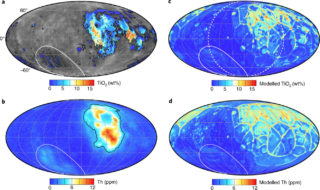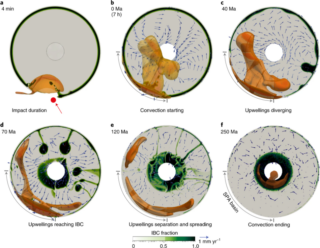Giant impact may explain lunar mystery
Results from recent simulations show how a violent, giant impact event, that formed the largest impact basin on the Moon, might have led to the asymmetry observed in the composition of the lunar interior.
The work, published in Nature Geoscience, provides a viable explanation for the asymmetrical spatial distribution of mare basalts, titanium and KREEP (potassium, rare earth elements and phosphorus) on the Moon. These asymmetries cannot be readily explained by solidification of a global magma ocean and subsequent mantle overturn, which should result in a layered and spherically symmetric lunar interior. The origin of the observed compositional asymmetry between the nearside and farside of the Moon had, until now, remained enigmatic.
Dr Nan Zhang, an affiliate Earth Dynamics Research Group member and lead author of the article, and his colleagues used hydro- and mantle convection numerical simulations of the giant impact event that formed the South Pole–Aitken basin, to show that the impact could cause instabilities that drive the dense KREEP-rich, ilmenite-bearing cumulate to migrate towards the nearside following lunar magma ocean solidification.

From the modeling presented in the article it is speculated that the South Pole–Aitken basin forming impact, which occured approximately 400 million years before the the initial eruption of mare basalts (at ~3.9 billion years ago), may represent the onset of Moon’s early dynamic evolution that produced the long-lasting and global structural heterogeneities.
The KREEP-rich, ilmenite-bearing cumulate reservoir predicted by the model to be in the nearside hemisphere, with highest content in its northwestern region, could be verified by basaltic samples collected by the recent Chang’e-5 mission, which landed nearby.

Contact person: Dr Nan Zhang, Peking University.
Relevant publication:
Zhang, N., Ding, M., Zhu, MH., Li, H., Li, H., Yue, Z., 2022. Lunar compositional asymmetry explained by mantle overturn following the South Pole–Aitken impact. Nature Geoscience, 15, 37–41. https://doi.org/10.1038/s41561-021-00872-4
